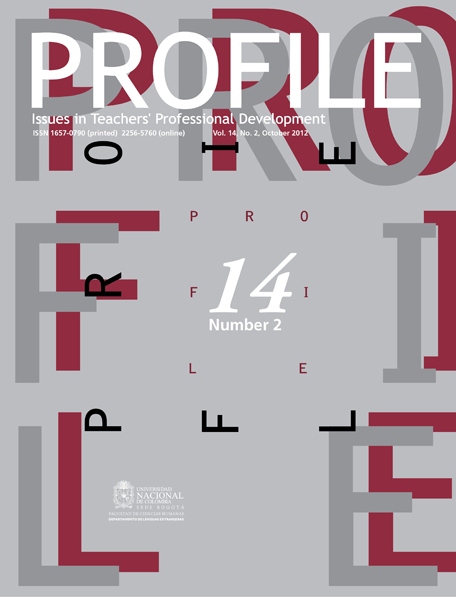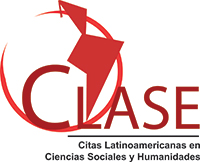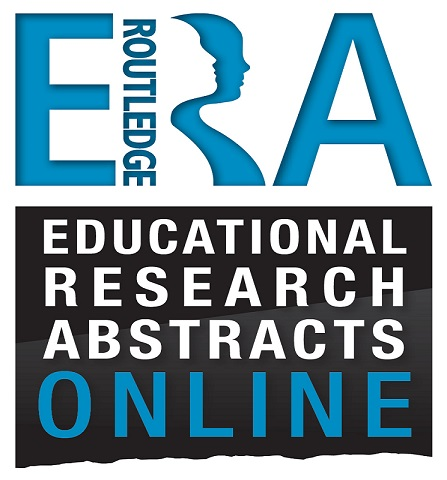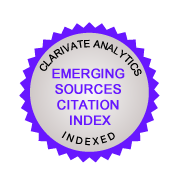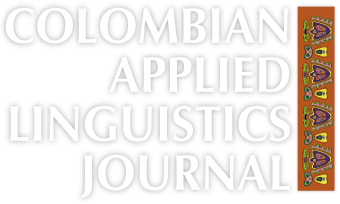EFL Students’ Perceptions about a Web-Based English Reading Comprehension Course
Percepciones de estudiantes de inglés como lengua extranjera acerca de un curso de comprensión lectora apoyado en la red
Keywords:
Perceptions, reading comprehension, web-based distance education (en)Comprensión de lectura, creencias, educación a distancia (es)
Web-based distance education is an innovative modality of instruction in Colombia. It is characterized by the separation of the teacher and learners, the use of technological tools and the students’ autonomy development. This paper reports the findings of a case study that explores students’ perceptions about an English reading comprehension course in a web-based modality. Findings show that students have different opinions about the course, its content and objectives, its level of difficulty, the time students invested in the course, adults’ learning, and the role of the teacher. We perceived that this course represents an academic challenge; it is conducive to learning, and favors students’ autonomous use of time.
La educación virtual es una modalidad de instrucción innovadora en Colombia. Se caracteriza por la separación del profesor y los estudiantes, el uso de recursos tecnológicos y el desarrollo de su autonomía. Este artículo muestra los hallazgos de un estudio de caso que explora las opiniones de los estudiantes acerca de la educación virtual. Se revelan las diferentes creencias sobre el curso, su contenido, objetivos y nivel de dificultad, el tiempo invertido por los estudiantes y el papel del profesor. Encontramos que este curso puede ser considerado como un desafío académico en el que se facilita el aprendizaje y el uso autónomo del tiempo.
EFL Students’ Perceptions about a Web-Based English Reading
Comprehension Course
Percepciones
de estudiantes de inglés como lengua extranjera acerca de un curso de
comprensión lectora apoyado en la red
Érica
Gómez Flórez*
Jorge
Eduardo Pineda**
Natalia
Marín García***
Universidad de
Antioquia, Colombia
**jorgeeduardopineda@gmail.com
This article was received on January 2, 2012, and
accepted on April 30, 2012.
Web-based distance education is an innovative modality
of instruction in Colombia. It is characterized by the separation of the
teacher and learners, the use of technological tools and the students’
autonomy development. This paper reports the findings of a case study that
explores students’ perceptions about an English reading comprehension
course in a web-based modality. Findings show that students have different
opinions about the course, its content and objectives, its level of difficulty,
the time students invested in the course, adults’ learning, and the role
of the teacher. We perceived that this course represents an academic challenge;
it is conducive to learning, and favors students’ autonomous use of time.
Key words: Perceptions, reading comprehension, web-based distance education.
La educación
virtual es una modalidad de instrucción innovadora en Colombia. Se
caracteriza por la separación del profesor y los estudiantes, el uso de
recursos tecnológicos y el desarrollo de su autonomía. Este
artículo muestra los hallazgos de un estudio de caso que explora las
opiniones de los estudiantes acerca de la educación virtual. Se revelan
las diferentes creencias sobre el curso, su contenido, objetivos y nivel de
dificultad, el tiempo invertido por los estudiantes y el papel del profesor.
Encontramos que este curso puede ser considerado como un desafío
académico en el que se facilita el aprendizaje y el uso autónomo
del tiempo.
Palabras clave: comprensión
de lectura, creencias, educación a distancia apoyada en la web.
Introduction
This research study was carried out at the school of
languages, Universidad de Antioquia, Medellín,
Colombia. The study took place in a reading comprehension course in English
offered to graduate students of the school of law. We used a case study
methodology to explore the different perceptions students had about web-based
distance courses. We found six main perceptions concerning the course: its
content and objectives; its level of difficulty, the time invested in the
course, adults’ learning, and the role of the teacher.
Literature
Review
In this section of the paper, we will discuss some key
concepts for our study which aimed at exploring the students’ perceptions
while enrolled in a web-based distance reading comprehension course in English.
We will define 4 main concepts: distance education, e-learning, online learning
and web-based education and we will refer to their characteristics, benefits
and drawbacks. Additionally, we will briefly mention the current situation of
distance education in Colombia. Then, we will provide a description of the
Moodle platform. Finally we will explore what reading in a foreign language
entails.
Distance Learning,
E-Learning and Web-Based Learning
Distance learning, e-learning, online learning, and web-based
learning are terms that are sometimes used interchangeably. They are used as
synonyms because of their multiple commonalities referring to the way the
instruction is carried out. In this kind of instruction, two agents are
involved (a learner and an instructor), it occurs at different times and/or
places, and it uses multiple instructional materials (Moore, Dickson-Deane,
& Galyen, 2011).
UNESCO’s Distance Learning Resources Network
defines distance education as an instructional delivery that does not obligate
or require the student to be physically present at the same location as the
instructor. Audio, video and computer technologies are now used as delivery
modes (as cited in Marcelo, Puente, Ballesteros & Palazon,
2002, p. 21). In addition, King (2002) states that in distance education
synchronous and direct interaction are not required during normal day-to-day
activities and that communication is available through discussion using e-mail
or electronic bulletin boards.
Similarly, Keegan (1996) refers to distance education
as an umbrella term for correspondence education, e-learning, online learning,
web-based and virtual learning (as cited by Moore et al., 2011, p. 130).
Distance learning is one of the most known terms; it refers to the access students
have to learn in distant places. These terms are different due to the evolution
distance learning has undergone. This evolution makes reference to the valuable
role technology has taken on in this kind of instruction (Moore et al., 2011).
Ellis (2004, as cited in Moore et al., 2011, p. 130)
mentions that e-learning not only bases instruction on internet, intranet,
web-sites and CD-ROM, but also on audio, video, and TV. It is evident that
technological tools characterized this modality of instruction, but Tavangarian, Leypold, Nölting, Röser, and
Voigt (2004, cited in Moore et al., 2011, p. 130) mention that e-learning
cannot be characterized as only procedural but that there is also evidence of
the transformation of the individual’s experience due to the process the
individuals follow constructing knowledge.
Similarly, online learning is defined by different
authors as “access to learning experiences via the use of some
technology” (Benson, 2002; Carliner, 2004;
Conrad, 2002, as cited in Moore et al., 2011, p. 130). Moreover, Hiltz and Turoff (2005) and
Conrad (2002) argue that online learning is a more recent or improved version
of distance education.
Web-Based Education
According to Sampson (2003), web-based education is a
mode of delivery which includes learning independently by using self-study
texts and asynchronous communication. Keegan (1996, cited in Sampson, 2003, p.
104) states that distance learning is characterized by the following aspects:
(1) the separation of teacher and learners, (2) the influence of an education
organization, (3) the use of technical media, (4) the provision of two way
communication, (5) and occasional face-to-face meetings. Our distance learning
course has all the characteristics stated above except for the occasional face-to-face
meeting that never took place; therefore, we chose the term web-based education
to refer to this modality of instruction along this paper.
King (2002) and Hannay and Newvine (2006) establish a series of benefits and drawbacks
regarding web-based distance education. They state that the main reason that
people choose these courses is the personal convenience they offer and that
participation in the course can take place anytime/anywhere. Distance courses
fit the students’ busy schedules and the students can access the course
from anywhere. However, King (2002) identifies that one of the biggest problems
of these courses is their low completion and high dropout rate. He argues that
the lack of feedback, feelings of isolation, frustration with technology,
anxiety and confusion contribute to an unsuccessful completion of the course.
Similarly Carr-Chellman, Dyer and Breman
(2000, cited in King, 2002, p. 160) state that slow connections, browser or
software interfaces incompatibility and servers going down can generate
frustration related with technology. They also argue that frustration with
technology will continue to be a factor that will generate problems in the
future, although technology related factors are the main determinants of
success or failure in web-based distance education.
Stepp-Greany (2002) also mentions other benefits of web-based distance education in
a study that aimed at determining students’ perceptions of (a) the role
and importance of the instructor in technology-enhanced language learning, (b)
the accessibility and relevance of the lab and the individual technological
components in student learning, and (c) the effects of technology on foreign
language learning experiences. In this study, she found that the role of the
instructor was perceived as very important by the participants since the
students believed that the instructor provided assistance with language and
fostered interaction with them. She also found that the participants’
cultural knowledge, their listening and reading skills as well as their
independent learning skills were enhanced as a result of the exposition to the
technological tools implemented in the program. However, she states that the
participants’ perceptions of the individual technological components were
divided. The participants in her study were first and second semester students
of Spanish enrolled in a technology enhanced learning program which included
internet activities, CD-ROM, electronic pen pals, and threaded discussions.
Distance Education
in Colombia
Facundo (2002) states that e-learning is most popular at the post graduate
level in Colombia. However, until 2002 there were no online programs offered at
the master’s and doctorate level. He also argues that typically, it is
professionals who are unwilling to submit themselves to the limitations of a
traditional classroom who turn to e-learning alternatives because they offer
more flexibility and take less time. Some of the obstacles faced by e-learning
proponents in Colombia are as follows: limited internet access, underdeveloped
tech culture, a shortage of confidence in e-learning, not enough promotion and
training for teachers in challenging economic or geographic circumstances. In
Colombia the most popular fields where e-learning has been used are education
engineering and the health sciences.
Facundo (2002) elicits some recommendations regarding the implementation of
web-based education. He states that e-learning can be promoted through
institutional agreements, more concern over the spread of pirated material, the
creation of open access courses, broader net coverage so that service is
cheaper and more accessible, marketing campaigns, and promotion of usefulness
of virtual tools in the areas of research and e-learning.
Moodle Platform
Another concept that we want to discuss is the Moodle
platform on which the web-based course of the study operates. Moodle stands for
Modular Object-Oriented Dynamic Learning
Environment. Moodle is an intuitive, template-based, open-source system. It
allows teachers to manage lessons, assignments and quizzes and also keeps
automatic log reports of each student (Brandl, 2005).
Moodle allows the integration of many resources in
web-based distance courses. Among the resources that Moodle offers are
text-based or html-formatted documents, audio, video, PowerPoint presentations
and flash-based applications (Ardila & Bedoya, 2006; Brandl, 2005).
Among the testing and assessment strategies, Moodle has the following question
types: multi-choice, true/false, matching, short answer, fill-ins and
open-ended questions.
Ardila and Bedoya (2006) and Brandl (2005)
state that one of the advantages of Moodle as a learning management system is
that the teacher can design lessons that take the
learner step-by-step in the course and the advancement from one lesson to the
other is allowed only if the learner demonstrates mastery in the topic of the
lesson.
Reading in a
Foreign Language
Finally, we want to discuss what it means to read in a
foreign language. Grabe and Stoller (2002) state that reading
goes beyond drawing meaning from the printed page and interpreting it
appropriately. They state that reading encompasses several other
aspects. For example when you read, you search for simple information, you skim
quickly, you learn from texts, you integrate information and, if you need to
write, you search for the information needed to write, you critique the texts
you read and finally you can read for general understanding. A proper
definition of reading must take into consideration the fact that reading
implies several processes which make it an active and fluent activity.
Therefore, Alderson (2000) and Grabe (1999, 2000) (as
cited in Grabe & Stoller,
2002, p. 17) define reading as a rapid, efficient, interactive, strategic,
flexible, evaluating, purposeful, learning, and linguistic process that makes
reading a fluent activity.
The Study
This was a descriptive and exploratory case study with
a holistic and interpretative approach as defined by Creswell (2007) and Yin
(2003), which derived from a major study that aimed at exploring the effect of
the modality of instruction, (face-to-face and web-based distance learning) on
a reading comprehension course in English. The objective of this minor study
was to explore the different perceptions students had about an English reading
comprehension course in a web-based modality.
Context
The exchange of knowledge with other universities
around the world has become an issue for the Universidad de Antioquia
(Colombia) and foreign languages play a key role. As a strategy to accomplish
this objective, the university has implemented a certification of foreign
language proficiency. Students can certify linguistic competence either by
taking a proficiency test or by taking face-to-face or web-based distance
courses.
In order to meet the foreign language requirement
established by the institution, a group of teachers from the school of
languages designed an English reading comprehension course for graduate
students in a web-based distance modality. It is a 120 hour completion course.
It has 5 modules, the first three modules last 30 hours each, the fourth module
lasts 20 hours and the fifth lasts 10 hours. The course explores topics such as
words and their meaning, reading strategies, development of reading skills,
methods of text organization and critical reading and includes different tools
such as forums and chats to discuss course content, videos to provide
explanations about the topics and content of the course, questionnaires and
links to other web-sites to provide exercises and practice. At the end of each
module there is an exam to check students’ learning process.
Participants
The students who participated in this study were from
the school of law. We decided to carry out this research study with these
students because they were the next to take the reading comprehension courses
(web-based and face-to-face) offered by the School of Languages to certify
language competence. There were 38 students, 13 men and 25 women registered in
the web-based course. Their ages ranged from 23 to 44. They were enrolled in
different graduate programs such as criminal law, family law, and
administrative law. Their experiences learning English and taking web-based
distance courses were very limited. They reported in the interviews, focus
groups and questionnaires that they had studied English in high school and some
of them had taken basic English courses in language
institutes. Regarding their experience taking web-based distance courses, only
two students said they had taken courses in this modality of instruction
related to other areas different from learning English.
Data
Collection
Through the development of the English reading
comprehension course in the web-based distance modality, we gathered data from
three different instruments: a questionnaire, two in-depth interviews and two
focus groups, in order to carry out triangulation and have saturation of data
(Creswell, 2007; Yin, 2003). Before participating in the study, we used a
consent form in which we informed the students of four aspects: 1) the
participation in the study was optional, 2) they could leave the study whenever
they wanted, 3) the information gathered would be used for research purposes
only, and 4) their participation in the study would not affect their physical,
academic and working well-being.
Although the instruments were designed to learn of the
students’ use of reading strategies, motivation, and perceptions such as
difficulties with the platform, time invested material and the role of the
teacher, we decided to use only the information regarding to the perceptions
the students had about the web-based distance course for the purpose of this
study. The questionnaire, the focus groups sessions and the in-depth interviews
took place in Spanish in order to make sure that students understood and
answered the questions clearly and felt comfortable sharing their perceptions
and feelings towards the course. The students’ opinions and perceptions
were translated into English to be used in this paper as evidence of our research
study.
The questionnaire included three types of questions: a
Likert scale from 1 to 4 where 1 was strongly agree
and 4 strongly disagree, open and close ended questions, and multiple choice
questions. The questionnaire was published on the platform of the course, where
the students could download it, fill it in, and upload it again to the
platform. In other cases, the students sent the questionnaire to the
teacher’s e-mail address (see Appendix A).
When the course ended, we carried out two focus group sessions
with approximately 12 students per session in order to obtain information
related to their perceptions of the process: the platform, the teacher, the
contents, their motivation, their reading comprehension process, among others.
These focus group sessions were guided by a moderator who belonged to the
research team. There were also two observers who took notes. These discussions
were tape recorded and each of them lasted around one hour and a half (see Appendix B).
Finally, we conducted two in-depth interviews with two
students we considered as key respondents (see Appendix C).
We selected them as key respondents because the opinions they gave us during
the focus group sessions were neither very positive nor very negative towards
the course. We used in-depth interviews because we wanted to explore deeply the
informants’ opinions about the course (Mertler,
2006). The interviews were also semi-structured because we used a guide with
themes but if new questions emerged during the conversation they were included
freely. The interviews were carried out by one of the members of the research
group and they lasted around 30 minutes. The students participated in the focus
groups and the interviews voluntarily. The sessions were face-to-face and audio
recorded.
Data
Analysis
Focus groups and in-depth interviews were tape
recorded, then transcribed. We read the transcriptions and the answers from the
questionnaire to find patterns. We met once a week with the purpose of
comparing the patterns identified previously. We found recurring themes which
further turned into broad categories based on the saturation of data and the
triangulation of our interpretations (Freeman, 1998; Alttrichter,
Posch & Somekh, 1993).
Findings
As already mentioned, our study focuses on identifying
the perceptions or opinions of the students after participating in a web-based
distance course. For the purpose of this study, we define perception as the
process of attaining under- standing of reality by organizing information
gathered through the senses. This process helps us understand the world and
also helps us recognize objects and events with clear locations in space and
time (Pomerantz, 2006, pp. 50-70).
We found six main topics of student perceptions
concerning the course: its content and objectives; its level of difficulty, the
time invested, the role of the teacher and adult learning. We summarized the
findings from our study in Table 1.

Perceptions about
the Tools, Activities and Advantages of the Course
The participants in our study reported several
perceptions about the tools, activities and advantages that the web-based
distance course offered. After taking the course, the students mentioned that
the platform has several positive features: it was user friendly and the
communication with the teacher was fluid. They pointed out the use of the
forum, the chat and the e-mail in order to discuss topics related to the course
content, to share knowledge, to ask questions and to obtain feedback from the
teacher and sometimes from other students. However, some students reported that
sometimes the e-mail was more effective than the chat for communication. They
also highlighted the implementation of tutorial videos to explain the content
of the course. For example, Isabel1, a student
of the course, said in an interview: “The course has useful tools:
forums, the teacher, our classmates, the Internet and the online dictionary
(…)” (In-depth interview, October 2009, p. 4).2
The students pinpointed that the course has several
advantages: They indicated that this modality of instruction allows the
students to manage their own time, they do not have to go to a specific place
to attend a class or any other event, the teaching process is personalized
because it is always available on the internet and there is constant and direct
contact with the teacher or instructor. Similarly, King
(2002) and Hannay and Newvine
(2006) state that one of the primary benefits of web-based distance education
is that the student does not have to go to a university campus which represents
saving travel time.
Perceptions about
the Level of Difficulty
At the beginning of the course the students had the
perception that the level of difficulty would be low, but after having taken
the course, they realized the level of difficulty was higher than expected.
They reported that the number of questionnaires and activities was high.
Although the students perceived the course as very
demanding, the participants felt highly motivated to take other courses in the
same modality of instruction because of the benefits web-based courses
represent, for example, saving time and money as they did not have to go to a
specific place at a specific moment. Pedro wrote this comment on the
self-evaluation format: “I thought the course was going to be easier or
less demanding and at the end I realized it was not. However, I save time
because I don’t have to go anywhere” (self-assessment format, June
2009, p. 3).
The participants said that the level of English
expected in the course was high and suggested a previous vocabulary unit to
perform well in the reading comprehension course.
Perceptions about
the Time Invested
Generally, the students thought that a web-based
course would be less time consuming than a face-to-face course. The students
reported the importance of working in the course every day; they suggested that
the course should have lasted more than six months. For instance, Claudia
reported the following in a focus group: “The course was very time
consuming. It was necessary to spend a long time [at least two hours daily] in
the activities, exercises, and in the personal activities” (Focus group
1, July 2009, p. 19).
The students pinpointed that they invested more time
in this course than in their graduate program. They also mentioned that they
learned to manage their own time to do the activities and questionnaires and to
participate in forums and chats. They suggested this course should last at
least one year, to be taken during their graduate studies.
Perceptions about
the Teacher’s Usefulness and Facilitation
When facing a web-based course, the students thought
that the teacher’s support was insufficient and that they had to work on
their own and had to be autonomous. In this course the students reported the
constant teacher’s support that motivated them to do all the activities.
For example, Luciana mentioned the following in an interview: “I thought
that I would not have very good support from the teacher, but I realized that
the support was excellent” (Focus group 2, July 2009, p. 14).
They also mentioned that because the teacher is
available to answer the students’ questions, the learning process is
perceived as personalized. For instance, María
said in one of the focus group sessions:
I could ask for
help as many times as I wanted to and the teacher answered as many questions as
I asked. (…) in web-based courses you can develop individuality, in
face-to-face courses you cannot say that you do not understand the texts
because the classmates might get bored… in the web-based course you can
have such communication between the teacher and the student. (Focus group 1,
July 2009, p. 14)
In connection to this, Muñoz and
González (2010) state that teaching in web-based environments represents
new roles for teachers; they have to become technical knowledge experts,
immediate feedback providers, interlocutors between teachers and students, they
have to advise how to manage time and they have to become constant motivators.
They also state that these new roles are a challenge not only for regular EFL
teachers but also for those who have specific training in the use of learning
platforms. Similarly, Zhang and Cui (2010) in a survey study carried out in
China found that participants in web-based courses perceived the
teachers’ role as consisting of helping learners to learn effectively by
offering students help or telling them what to do, discussing their progress
and telling students about their difficulties. The teacher is perceived as a
key aspect in web-based distance courses, the teacher is responsible for
providing feedback.
Perceptions about
the Course Content and Objectives
The participants developed different perceptions of
what the course and its contents would be about. Some students expected: 1) to
learn the verb to be; 2) they believed that the readings of the course were
going to be related to law; and 3) some of them expected a translation course.
Some of these perceptions remained during and after they finished the course
and some of them changed at the end. The students complained because they said
they did not achieve their expected objectives in six months, for example, to
translate texts accurately; to understand a reading word by word, to acquire
listening skills and to learn the language holistically. For example, Martha
expressed the following in a focus group:
I could not achieve
the objective, we could not! I mean, I learned to read a little, but if I have
to do an exam about a text in this moment I can translate it but not quite
accurately, just by parts. (Focus group 1, July 2009, p. 3)
After taking part in this course, the
participants’ perceptions of the course content and objectives changed
because they realized the real focus of the course was reading comprehension,
improving vocabulary and providing students with reading strategies not only in
English but also in Spanish, instead of translation and the study of grammar.
Eduardo expressed in one the focus group sessions the usefulness of the
strategies acquired in the course to read in Spanish: “I must read so
many resolutions, so I decided to use scanning strategy to choose what was
useful and what was not, so I read quicker. (…) these techniques are
helpful for everything you must read” (Focus group 1, July 2009, p. 15).
As Baker (1986, in Hannay & Newvine,
2006, p. 2) argues, one of the major drawbacks of web-based distance education
is that the separation of the instructor and the students can cause problems
comprehending course information, for example, the content or objectives and
course expectations are often not clear.
Perceptions About the Adult Learning Process
Some students who participated in the web-based course
had strong perceptions about how age affects their successful performance in
this modality of instruction and their learning of English.
They believed their ages were not appropriate to learn
English. They felt sure young students and children are more skilled than
adults in the process of learning a foreign language. They kept this belief
throughout the course.
The students in this course were not comfortable with
the results of the process because they thought their ages implied less memory,
less reading comprehension abilities and more time consumption to understand
something. For example, Gustavo mentioned the following in an interview:
“An adult does not learn the English language as easy as youngsters or
children” (In-depth interview, October 2009, p. 2).
Regarding these perceptions, Tyler-Smith (2006) states
that adult on-line learners have certain advantages and disadvantages over
their younger counterparts for learning. Some of the advantages the author
mentions, based on Knowles (1984, p. 12), are that adult learners’ life
experience “becomes an increasing resource of learning”; they also
apply what they learn and learn on a problem solving approach. In addition,
adults base their internal motivation on “self-development, career
advancement and achievement”, therefore, their
motivation is not based on getting passing grades or qualifications to obtain
specific employment.
However, according to the Cognitive Load Theory (Sweller & Chandler, 1994; Sweller,
1999; and Sweller, Paas
& Renkl, 2003, cited in Tyler-Smith, 2006), adult
learners could be confronted with some limitations regarding e-learning as
“having limited digital literacy experience and being generally far less
adept at decoding the multimedia interfaces involved with e-learning than their
younger counterparts” (Tyler-Smith, 2006, p. 76). This is also supported
by Eshet-Alkalai (2004, cited in Tyler-Smith, 2006),
who explains that:
Digital literacy
involves more than the ability to use software or operate a digital device; it
includes a large variety of complex cognitive, motor, sociological and
emotional skills, which users need in order to function effectively in digital
environments. (p. 78)
Tyler-Smith (2006), based on Whipp
and Chiarelli (2004, p. 6), also highlights that not only
adult learners, but every first time e-learner faces multiple challenges such
as “technical access, asynchronicity,
text-based discussions, multiple conversations, information overload and
isolation” (p. 78).
Similar to these authors’ ideas, the participants
in our study attributed their difficulties with technology to their ages. They
said adults are not accustomed to technology, computers and to web-based
distance courses. They believed that a young person who has more technological
skills performs better in this kind of modality than someone who is a grown up
and is not used to technology at the same level.
We also noticed that students who had negative
perceptions about technology did not trust it at all. Although the learners had
different sources of communication in the Moodle platform such as chats and
forums, some of them continued sending their workshops or their messages to the
teacher by e-mail because they were more accustomed to using it in their jobs
and in their everyday lives.
Conclusions
and Implications
The use of tools such as chats, forums and the use of
e-mail as well as the inclusion of video tutorials built positive perceptions
towards the web-based course. On the one hand, the implementation of different
tools allows the students to communicate with the teacher, increases the sense
of support and decreases the sense of loneliness and abandonment because the
teacher and other students can provide feedback and discuss topics related to
the content of the course. On the other hand, the use of tutorial videos
provides the students with visual, illustrative and graphic explanations of the
course content.
Web-based education entails several benefits such as:
saving time and money because people do not have to travel to attend classes at
a specific time or in a particular place, which motivates them to undertake
studies in this modality of instruction. We noticed that people prefer saving
time and money rather than paying attention to the course level of difficulty.
Similarly, web-based courses are time consuming and they help students develop
time management skills and a big sense of responsibility.
Hannay and Newvine (2006) in a study comparing distance learning and
traditional learning found that the participants in distance learning courses
preferred those courses because they had other commitments that limited their
ability to take classes in the traditional format. They also found that the
participants in distance courses felt highly attracted to these courses because
they save time and money since they do not have to travel to take classes.
Moreover, teacher support is not minimized in
web-based courses as students thought at the beginning of the course. The
students felt that the teacher was available 24/7 because s/he answered the
messages, graded the exercises, and posted messages on the forums to promote
students’ interaction and participation on a daily basis.
Therefore, it is paramount for pre-service and
in-service teachers to be well-prepared to play the role of constant advisors,
to promote the use of each tool and answer students’ doubts to decrease
students’ anxieties and misconceptions about web-based courses.
For the students to self-assess their performance and
measure the level of achievement of their goals, the course content and
objectives must be explained and discussed from the beginning. It is important
to design an induction unit for web-based courses that can be either
face-to-face or web-based distance to make sure students have a concise idea of
the course content and objectives. The induction unit can also deal with
aspects such as the basic features of the course, the platform and the
evaluation proposal. The possible result of the induction program is to lessen
students’ anxiety and improve their performance in the course.
Although the students thought that certain ages
prevented them from learning English in a web-based environment, the Moodle
platform is user friendly, is intuitive, and offers multiple tools that allow
students to get accustomed to using it very quickly. Besides, the course
objective is to provide students with strategies to comprehend written texts in
English; therefore, the course can be taken by everybody regardless of age and
linguistic background. The main concern was not age, but the fact that it was a
new learning experience, both linguistically and technologically. This kind of
courses are a new option for students to continue their preparation to better
compete in the current global world and to have access to diverse and updated
information.
Limitations
of the Study
During the development of this research study, we
faced different limitations that need to be taken into consideration for
further research. The first limitation deals with the need to research the
perceptions of web-based distance education of a larger number of students,
including students from different academic programs, and taking into account
more than one group. The act of researching only one group from a specific
academic program limits the assertions made in the findings.
The second limitation we faced relates to the fact
that this study emerged from a major study. The objective of that study was to
research the effect of face-to-face and web-based English reading comprehension
courses in graduate students at the Universidad de Antioquia. Accordingly, the
data collection techniques were addressed to explore students’ interaction,
motivation, perceptions and strategies used in these two modalities of
instruction. Although the focus of the major study was not only to search the
students’ perceptions about this modality, we decided to conduct this
minor study because we observed and could infer the different perceptions the
participants had when we collected and analyzed the data. For further research,
we considered it necessary to design data collection instruments that directly
addressed the subject matter and that could deeply explore students’
perceptions about web-based distance courses and how these perceptions change
throughout the course.
Finally, we think the fact that students had to take
this course as a requirement in order to continue their graduate studies
changes their perceptions not only of web-based distance education, but also of
English reading comprehension courses. It would be interesting to explore in
further research the perceptions students have about this kind of courses in
circumstances where they take them voluntarily.
1. We changed the
names of the informants in this paper in order to keep confidentiality.
2. The interviews,
the questionnaires and the focus groups were conducted in Spanish. A
translation into English is provided for the purpose of this publication.
References
Altrichter, H., Posch, P., & Somekh, B. (1993). Professors investigate their
work: An introduction to methods of action research. London: Routledge.
Ardila, M., & Bedoya, J. (2006). La
inclusión de la plataforma de aprendizaje en línea MOODLE en un
curso de gramática contrastiva español, inglés. Íkala, 11(17), 181-205.
Brandl, K. (2005).
Are you ready to ‘MOODLE’? Language
Learning and Technology, 9(2), 16-23.
Conrad, D. (2002). Deep in the hearts of learners: Insights into the
nature of online community. Journal of
Distance Education, 17(1), 1-19.
Creswell, J. (2007). Qualitative
inquiry and research design: Choosing among five approaches (2nd ed.). Thousand Oaks, CA: Sage Publications.
Facundo, A. (2002). La educación superior a distancia/virtual en Colombia. Retrieved from http://portales.puj.edu.co/didactica/PDF/Tecnologia/EducacionvirtualenColombia.pdf
Freeman, D. (1998). Doing teacher
research: From inquiry to understanding. Boston, MA: Heinle
& Heinle.
Grabe, W., & Stoller, F. (2002). Teaching and
researching reading. England: Pearson Education.
Hannay, M., & Newvine, T.
(2006). Perceptions of distance learning: A comparison of
online and traditional learning. MERLOT Journal of online learning and teaching, 2(1), 1-11.
Hiltz, S., & Turoff, M.
(2005). Education goes digital: The evolution of online
learning and the revolution in higher education. Communications of the ACM, 48(10), 59-64.
King, F. (2002). A virtual student. Not an
ordinary Joe. The Internet and Higher
Education, 5(2), 157-166.
Marcelo, C., Puente, D., Ballesteros, M.,
& Palazon, A. (2002). E-learning, teleformación:
diseño, desarrollo y evaluación de la formación a
través de internet. Barcelona: Gestión 2000.
Mertler, C. (2006). Action research:
Teachers as researchers in the classroom. Thousand Oaks, CA: Sage
Publications.
Moore, J., Dickson-Deane, C., & Galyen, K. (2011). E-Learning, online learning and distance learning environments: Are
they the same? The Internet and Higher
Education, 14, 129-135.
Muñoz, J., & González, A. (2010). Teaching reading comprehension in English in a
distance web-based course: New roles for teachers. PROFILE Issues in Teachers’ Professional Development, 12(2),
69-85.
Pomerantz, J. (2006). Perception: Overview. In L. Nadel (Ed.), Encyclopedia
of Cognitive Science (pp. 527-537). London: Nature Publishing Group.
Sampson, N. (2003). Meeting the needs of distance
learners. Language Learning &
Technology, 7(3), 103-118.
Stepp-Greany, J. (2002). Students’ perceptions on language learning in a technological
environment: Implications for the new millennium. Language Learning & Technology, 6(1), 165-180.
Tyler-Smith, K. (2006). Early attrition among first time eLearners: A review of factors that contribute to drop-out,
withdrawal and non-completion rates of adult learners undertaking eLearning
programs. MERLOT
Journal of online learning and teaching, 2(2), 73-85.
Yin, R. (2003). Case study research: Design and
methods. Thousand Oaks, CA: Sage Publications.
Zhang, X., & Cui, G. (2010). Learning perceptions of distance
foreign language learners in China: A survey study. System, 38(1), 30-40.
About the
Authors
Érica Gómez Flórez is a full time teacher at Universidad de Antioquia.
She also holds a master in language teaching from the University of Rouen
(France). She is a member of the EALE research group at Universidad de
Antioquia, Medellín, Colombia.
Jorge Eduardo
Pineda is a full time teacher at Universidad de Antioquia.
He holds a master in language teaching from Universidad de Caldas (Colombia).
He is a member of the EALE research group at Universidad de Antioquia, Medellín, Colombia.
Natalia Marín García is a foreign language student at Universidad de
Antioquia. She is a member of the EALE research group at Universidad de
Antioquia, Medellín, Colombia.
Appendix A: Motivation
Questionnaire
Universidad de
Antioquia
Escuela de Idiomas
Questionnaire about motivation
The information you provide in this questionnaire will
only be used for the purposes of this study and will not have any effect on the
final result of the course.
Please mark from 1 to 4 whether you agree or disagree
with the following statements.
A. Motivation

9. The teacher has motivated me because
__________________________________________________________________________________
__________________________________________________________________________________
10. I feel discouraged about the teacher and about the
course because
__________________________________________________________________________________
__________________________________________________________________________________
B. The course
1. Have you had any trouble when using the platform?
__________________________________________________________________________________
__________________________________________________________________________________
2. What kind of problems have you experienced?
__________________________________________________________________________________
__________________________________________________________________________________
3. How much time do you invest in the course every
week? (choose 1)
a. Less than 5 hours____
b. Between 5 and 10 hours____
c. More than 10 hours____
4. What resources do you use besides the ones offered by the platform to
achieve your objectives
a. Online resources____
b. Help from other people____
c. E-mail the teacher____
d. E-mail to other participants of the course____
e. Dictionary online____
f. Paper-based dictionary____
g. Online translator____
5. When you have a question about the topics studied
in class, you
a. Ask the teacher____
b. Ask another participant in the course____
c. Use the
dictionary or the material available in the platform____
6. When you work in the platform, you
a. Read the
theory, see the explanations first and then you take the questionnaires____
b. Take the
questionnaires without checking the explanations____
c. Follow the order proposed in the course____
d. Follow a
different order from the one proposed by the course____
e. Print the
exercises, answer them and later answer the
questionnaires in the platform____
f. Save them
in a Word document, answer them and later answer the questionnaires in the
platform____
g. Answer the questionnaires in the platform____
C. Reading
strategies
Please mark from 1 to 4 whether you agree or disagree
with the following statements

Universidad de Antioquia
Escuela de Idiomas
Guiding questions
a. How would you
define the experience of taking this Reading comprehension course?
b. What advantages
and disadvantages have you found in this course?
c. How would you
define the role of the teacher in this course?
d. Do you think
your reading comprehension skills have improved after taking this course?
e. Do you feel
motivated to read other English texts different from the ones studied in class?
f. Do you used the reading
strategies studied in class in you graduate program?
g. What is your
opinion of the distribution of the content in the platform?
h. What would you
change about the course if you were going to take it again?
Appendix C: In-Depth Interview Guide
Universidad de
Antioquia
Escuela de Idiomas
Interviewer’s
name:_____________________________________
Interviewee’s
name:_____________________________________
Date:_______ Place:______
Recommendation: Let interviewees speak spontaneously. Help them get
involved in the activity. Foster a relaxed environment.
Guiding questions
1. Tell us
something about your experience learning English before taking this course.
2. What is
your opinion of the learning of English after taking this course?
3. What
difficulties did you experience when taking this course?
4. What is
your opinion of the resources offered by the platform?
5. What would
you change about the course?
6. Tell us
something about the steps you followed when taking the exams at the end of each
unit.
7. How did you
use the communication tools offered by the platform? (chat,
forums, e-mail, instant messages)
References
Altrichter, H., Posch, P., & Somekh, B. (1993). Professors investigate their work: An introduction to methods of action research. London: Routledge.
Ardila, M., & Bedoya, J. (2006). La inclusión de la plataforma de aprendizaje en línea MOODLE en un curso de gramática contrastiva español, inglés. Íkala, 11(17), 181-205.
Brandl, K. (2005). Are you ready to ‘MOODLE’? Language Learning and Technology, 9(2), 16-23.
Conrad, D. (2002). Deep in the hearts of learners: Insights into the nature of online community. Journal of Distance Education, 17(1), 1-19.
Creswell, J. (2007). Qualitative inquiry and research design: Choosing among five approaches (2nd ed.). Thousand Oaks, CA: Sage Publications.
Facundo, A. (2002). La educación superior a distancia/virtual en Colombia. Retrieved from http://portales.puj.edu.co/didactica/PDF/Tecnologia/EducacionvirtualenColombia.pdf
Freeman, D. (1998). Doing teacher research: From inquiry to understanding. Boston, MA: Heinle & Heinle.
Grabe, W., & Stoller, F. (2002). Teaching and researching reading. England: Pearson Education.
Hannay, M., & Newvine, T. (2006). Perceptions of distance learning: A comparison of online and traditional learning. MERLOT Journal of online learning and teaching, 2(1), 1-11.
Hiltz, S., & Turoff, M. (2005). Education goes digital: The evolution of online learning and the revolution in higher education. Communications of the ACM, 48(10), 59-64.
King, F. (2002). A virtual student. Not an ordinary Joe. The Internet and Higher Education, 5(2), 157-166.
Marcelo, C., Puente, D., Ballesteros, M., & Palazon, A. (2002). E-learning, teleformación: diseño, desarrollo y evaluación de la formación a través de internet. Barcelona: Gestión 2000.
Mertler, C. (2006). Action research: Teachers as researchers in the classroom. Thousand Oaks, CA: Sage Publications.
Moore, J., Dickson-Deane, C., & Galyen, K. (2011). E-Learning, online learning and distance learning environments: Are they the same? The Internet and Higher Education, 14, 129-135.
Muñoz, J., & González, A. (2010). Teaching reading comprehension in English in a distance web-based course: New roles for teachers. PROFILE Issues in Teachers’ Professional Development, 12(2), 69-85.
Pomerantz, J. (2006). Perception: Overview. In L. Nadel (Ed.), Encyclopedia of Cognitive Science (pp. 527-537). London: Nature Publishing Group.
Sampson, N. (2003). Meeting the needs of distance learners. Language Learning & Technology, 7(3), 103-118.
Stepp-Greany, J. (2002). Students’ perceptions on language learning in a technological environment: Implications for the new millennium. Language Learning & Technology, 6(1), 165-180.
Tyler-Smith, K. (2006). Early attrition among first time eLearners: A review of factors that contribute to drop-out, withdrawal and non-completion rates of adult learners undertaking eLearning programs. MERLOT Journal of online learning and teaching, 2(2), 73-85.
Yin, R. (2003). Case study research: Design and methods. Thousand Oaks, CA: Sage Publications.
Zhang, X., & Cui, G. (2010). Learning perceptions of distance foreign language learners in China: A survey study. System, 38(1), 30-40.
How to Cite
APA
ACM
ACS
ABNT
Chicago
Harvard
IEEE
MLA
Turabian
Vancouver
Download Citation
Article abstract page views
Downloads
License
Copyright (c) 2012 Érica Gómez Flórez, Jorge Eduardo Pineda, Natalia Marín García

This work is licensed under a Creative Commons Attribution-NonCommercial-NoDerivatives 4.0 International License.
You are authorized to copy and redistribute the material in any medium or format as long as you give appropriate credit to the authors of the articles and to Profile: Issues in Teachers' Professional Development as original source of publication. The use of the material for commercial purposes is not allowed. If you remix, transform, or build upon the material, you may not distribute the modified material.
Authors retain the intellectual property of their manuscripts with the following restriction: first publication is granted to Profile: Issues in Teachers' Professional Development.



